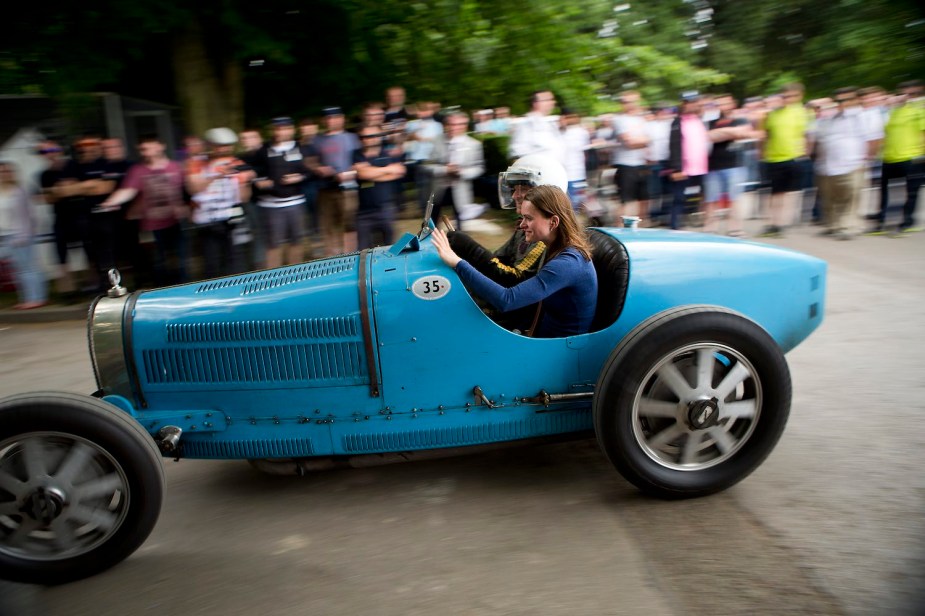
Bugatti Was The Most Innovative Sports Car Company in History–A Century Ago
The modern Bugatti company is undoubtedly innovative. Its records include the first production car to break the 300 mph barrier–and the first to sell for over $10 million. But the title of most innovative sportscar company in history may rightfully belong to the Bugatti of a century ago. The design philosophy of the revolutionary company led to material innovations still in use today.
The Bugatti Type 13 “Brescia” inspired racecars with lightness built in

As long as there have been automobiles, their drivers have challenged one another tor races. The first known automobile race was the 1894 Paris-Rouen race, a rowdy weeklong event hosted by Le Petit Journal newspaper. Back then, bigger was faster, and the quickest entrant was Count de Dion’s steam tractor, which pulled a trailer for his entourage.
Over the next two decades, race car designers increased their cars’ displacement and size. Then an artist named Ettore Bugatti rolled out an all-new type of race car that took off after WWI. Dick Ruzzin, a retired designer for General Motors, wrote the following for Bugatti Revue:
“Ettore Bugatti chose to go in an ultra lightweight direction for his racecars. They were wildly successful against the much heavier and more powerful FIAT racers. Ettore Bugatti’s developing aesthetic skills were joined with his functional philosophy resulting in unique vehicles. For both talents and abilities to be found in one man is rare and unique in automotive history. Ettore Bugatti’s linkage of art and function is not seen on many other vehicles of the day.”
Dick Ruzzin for the Bugatti Revue
It’s been said (though I can’t confirm it) that Ettore’s company motto was, “Build lightness into the car.” Later, advertising materials would adopt a slogan that roughly translates to “Lightness and strength.”
Whatever Ettore’s motto was, his roadsters would change race cars forever. They were light, nimble, and artistically elegant. And they dominated race tracks around the world. But in the pursuit of “building lightness into every car,” Bugatti invented technologies still in use today.
The Bugatti Type 35 introduced aluminum rims

Until 1924, Ettore Bugatti built his race cars with traditional, wire-spoke rims. But in 1924, the inventor debuted the first ever aluminum rims on his Type 35 race car. He designed the wheels himself, giving them eight wide spokes.
Later, Bugatti would continue to improve his aluminum rims. Among his 500 patents is one for “Improvements relating to vehicle wheels with cooling discs” and another for an “elastic wheel with radially and axially sprung rim with respect to the wheel center.” (Bugatti.com)
Most every sports car today has aluminum or alloy rims of some sort. But most sportscar fans don’t know that this technology debuted with the Bugatti Type 35. Meanwhile, the 300 mph Chiron has already moved on and had custom carbon fiber rims and carbon fiber bands in its tires.
The Bugatti Type 46 pioneered the transaxle
For the first century of the automobile, almost every vehicle had an engine and transmission over the front axle with a driveshaft extending to the rear axle. This front engine, RWD layout, is still favored for trucks and muscle cars.
The only problem with front engine, RWD, is that it makes the vehicle front-heavy. Several generations of Corvette and the 2022-present NASCAR Cup cars achieve more balance by placing the engine in front and integrating the transmission into the axle in a unit called a “transaxle.” But nearly a century before NASCAR upgraded to this layout, Bugatti pioneered it with the 1929 Type 46.
The Type 46 was not the only Bugatti with this layout. The Type 50 Grander Touring car and the Type 50B race car shared the same straight-eight engine and three-speed transaxle.
So there you have it. Bugatti was one of the most innovative sports car manufacturers of the early 20th century. Thanks to Ettore’s revolutionary design philosophy, Bugatti pioneered technology such as aluminum rims and a rear transaxle.
Next, read about the Bugatti so rare that even Jay Leno can’t buy one, or learn more about the company’s history in the video below:






